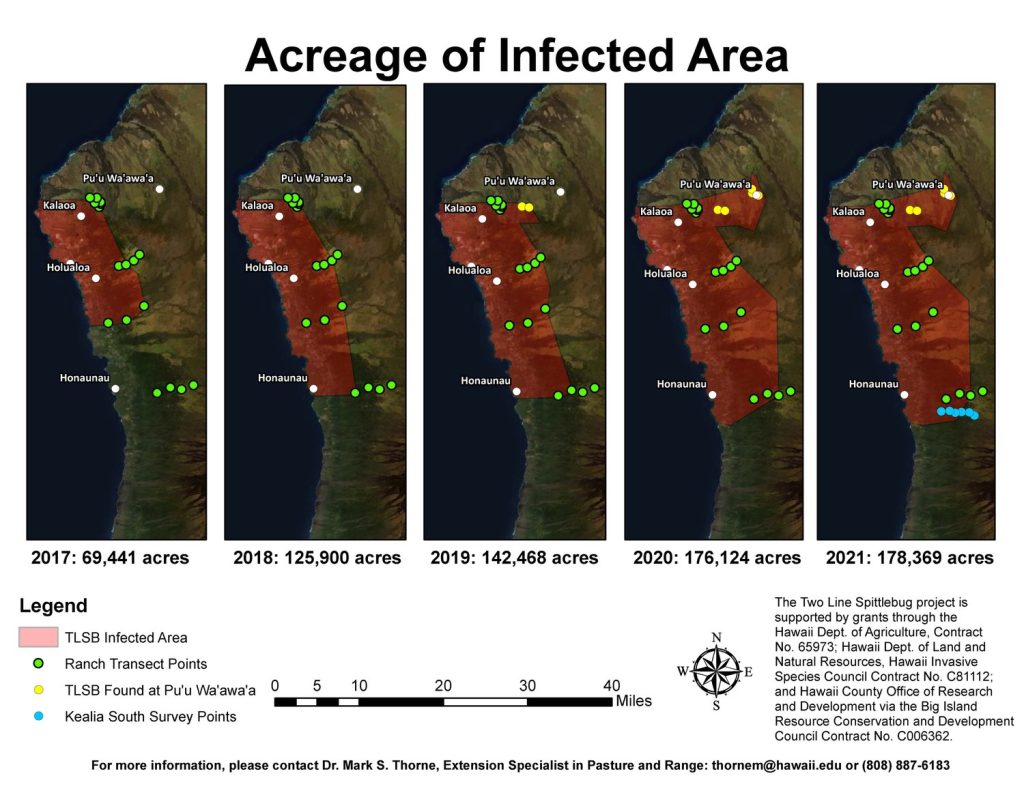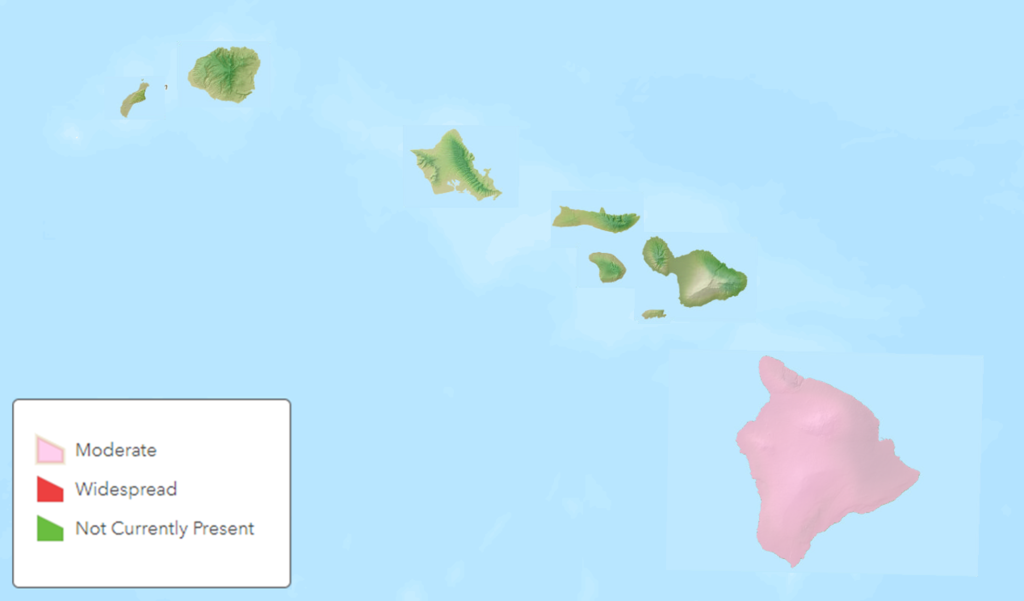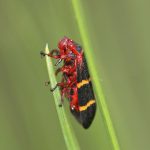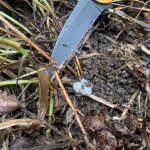Two-lined spittlebug (TLSB)
Prosapia bicincta
- Regulatory Status: “The Two-Lined Spittlebug (TLSB), Prosapia bicincta, was first detected in Hawai`i in 2016 and by 2021 infested 180,000 acres on Hawai`i Island. In recognition of the severe impacts of this pest, the Legislature appropriated $350,000 through Act 137 of Session Laws of Hawai`i 2021 for mitigation and control of the TLSB and recovery of the rangelands damaged by this pest.” (HDOA)
- What You Can Do: Spread the word, share videos and information with family and friends. If you live on the West side of Hawaiʻi Island don’t move potted plants/soil to other parts of the island. Watch for signs of TLSB damage on your pasture, report and identify damage and the insect with pictures reported to 643Pest. Support ranchers with your time and money.
- Report this species if seen to 643Pest or call 808-643-7378 (643-PEST)
- Prevention and Control Category: BIISC Invasive Insect
Photo credit above: Left (Katja Schulz), right (Pavel Kirillov)
- TSLB nymph size comparison
- TSLB side profile
- Spittle mass at soil level
- Stages of TLSB lifecycle
Photo credit above from left tor right: Chelsea Arnott, John Flannery, Chelsea Arnott, Shannon Wilson


DESCRIPTION:
- Adults have black wings with two orange or red lines across them, reddish black legs, and a red abdomen.
- TLSB adults are 8-10 mm long.
- Nymphs (the juvenile form of the insect) are reddish brown have a yellow to cream colored abdomen, and two small pink lines on the side.
- The nymphs feed on grasses, creating something known as a spittle mass. This white foamy mass is from their own spittle and the juices of their host plant. These can be found at ground level where the insect is present.
- Both adults and nymphs feed on grasses. Adults cause more damage.
- Damage from adults feeding on grasses may present itself within 24 hours.
- ” The leaf blade dies in 1-3 days after feeding and the tiller dies in 3-4 days after feeding. Damage appears as yellow streaks or tips, followed by browning and curling. ” (TLSB Hawaii)
IMPACTS:
- Heavy TLSB infestation can completely kill grass, and wipe out entire pastures.
- Areas of dead grass lead to more aggressive, difficult to control weeds moving in and taking over, this has devastating affects on cattle farmers, who depend on the grass as forage for their herds.
- In Kona where TLSB was first found and is still present, pastures have not recovered from damage. Former pastureland has become a reserve for invasive weeds.
- TLSB has the potential to devastate the cattle industry and make long lasting changes to the landscape.
ERADICATION & CONTROL METHODS:
- To assess whether or not treatment is necessary, turf must be checked down at the soil line for spittle masses.
- Current recommendations focus on intensive and targeted grazing of infested areas during early and late nymph stages.
- Targeted and limited use of pesticides is suggested in new areas of infestation and critical areas.
- Since the infestation is relatively recent, research is on-going and developing. Integrated pest management extension materials are in the works.
WHAT YOU CAN DO:
- Hawaiʻi Island residents should be alert to unexplained patches of dead grass they encounter on their properties – if they can’t be easily explained by other environmental factors they should be reported. Report to 643pest.org with photos.
- Hawaiʻi Island residents should avoid moving potted plants, soil, other live plant material to other parts of the island. Especially from the West side out.
- Those visiting areas affected by TLSB, like hunters and ranch workers, should clean the mud off of their wheels and wheel wells before traveling to another district of the island.
- Share info with friends and family. Support for funding and research against TLSB by submitting testimony in support.






